The 3 Body Problem
Running is like a two body problem, where the forces at landing are coordinated with the forces of propulsion to create a stride. Adding shoes into the mix is like a third body, because a shoe compresses passively rather than generating force with muscles and joints. Solving the three body problem is the goal of run footwear science. The solution is knowing how forces flow through different parts of your feet during landing versus propulsion. Only then can you work in the third body: the shoes. But to what effect? At Vimazi, the effect of the shoes is to reduce the stress, fatigue, and the risk of injury on your joints, muscles, and connective tissues.
What you are about to read has never been published before, because we are the first to present it. To put it bluntly, no researchers in biomechanics or human physiology have come close to working out the fundamental physics that govern how we walk and run. Forces under the whole foot have been measured for decades with force plates. What hasn’t been measured, or determined specifically, is the portion of the total force at any time that is in the heel versus the forefoot. This is critical information, because it determines how all your joints and tissues are affected. At Vimazi, we figured out how to measure heel forces versus forefoot and some of that data is presented below. But most importantly, we figured out the physics for how the body generates those forces. This is a big deal, because it allows us to determine what those forces are for any situation, such as heel strike versus forefoot strike, uphill versus downhill and for any slope, high cadence versus slow cadence, or a fast pace versus a slow pace. We don’t have to measure all of these different scenarios, we predict them using physics.
We can finely slice and dice differences in running form, and we will present differences for heel strike versus forefoot strike. However, understanding begins with the difference between walking and running, because the forces differ dramatically. The most important take away from this article is how the heel forces compare to forefoot forces with regards to body weight. As long as we know how these forces compare to each other and what causes the changes, then we can engineer shoes to get the effects we want.
The heel vs. forefoot force pattern for walking on the flat is shown in Fig. 1. The total force pattern is the sum of heel and forefoot, but you can see clearly that the peak forefoot force is greater than the peak heel force. You can also see that the total force is about 1 body weight (BW). Of course, you can increase the total forces over 1 BW by 1 – 10% with high-stepping or walking up or down hill, but you cannot decrease below 1 BW (unless something lifts you up!). The graph below is called a vertical ground reaction force (vGRF) and this shows how the forces change during a stride from the moment you step down on one foot until it is lifted off the ground and your other foot takes the weight. Note that the peak forefoot force is about 35% greater than the peak heel force.

Fig. 1. Walking vGRF. Heel and forefoot shown separately and in superposition.
Now let’s compare it to running on flat terrain. We’ll begin by showing an average heel strike pattern. An average heel strike means that the time between when the heel strikes and when the forefoot comes down is in the middle of the range (0 – 0.03 s), where 0 difference means a “midfoot strike”. Fig. 2 shows a heel strike of 0.02 s.

Fig. 2 Run vGRF with heel and forefoot impact force broken out from propulsion. “Total foot” is what is measured with a force plate and includes both impact and propulsion forces.
Here is what’s important to take away:
- The total peak force is about 3 BW; significantly higher than walking.
- The peak forefoot propulsion force (solid red) is twice the peak heel force (dark blue).
- In heel strike, the peak heel force (dark blue) is higher than forefoot impact force (dotted red).
This should all make commonsense, although it may be surprising to see that the propulsion force is so much greater than heel impact. Our brains are not good at telling the difference. The actual distribution of force matters greatly to shoe design, because absorbing the impact shock and stabilizing propulsion force require different densities. We will get into shoe design in a moment. But first we need to look at the forces during a forefoot strike. Note that this is not about sprinting, where the heel never touches the ground. This is for landing on the forefoot first and letting the heel naturally contact the ground.

Fig. 3 Run vGRF with a forefoot strike. Note that forefoot impact (dotted red) is higher than heel impact (solid blue). Cadence and speed (stride length) are the same as in Fig. 2.
Compare Figures 2 and 3 and note how the forefoot makes contact 0.02 s before the heel in Fig. 3 (this is the definition of a forefoot strike). The result is two things:
- The total energy of impact is spread over time more evenly, so the peaks are lower. This is because some of the impact energy is turned to heat in the calf muscles that lower the heel to the ground and this is explicitly shown in the equations.
- The peak heel force is lower than with a heel strike, but is still present.
The forefoot strike pattern should also make commonsense and nicely explains why barefoot runners prefer to land with a forefoot strike. There are differences in the horizontal forces between a forefoot strike and a heel strike (keeping cadence and stride length the same), but we won’t get into them here, because we want to focus on what matters for shoe design.
A forefoot strike puts even less force on the heel, but we still want to absorb the heel shock in the shoe. The physics is the same as in a heel strike: when the foam compresses, it absorbs impact shock (technically called the kinetic energy). For a given force, the softer the foam, the more compression. Commonsense. So if you want compression with less force, you need a softer foam. The point here is that changing a strike pattern from a heel strike to a forefoot strike doesn’t change the shoe design; you still need a much softer heel foam than forefoot foam.
As promised, here is some data from barefoot running trials where we measured heel and forefoot force with a special instrument that segregates different parts of the foot (Tekscan). The foot images and traces of the center of force are shown to distinguish between heel strike and forefoot strike. A force plate measurement cannot distinguish between impact and propulsion, because they overlap. These data (graphs) show clearly what is forefoot vs heel, and that is what matters for shoe design.
Fig. 4. Tekscan imaging of heel strike and forefoot strike running patterns.

Fig. 5 Measured vGRF of heel and forefoot strike patterns corresponding to Fig. 4. HS strike of 0.010 s, FF strike of 0.015 s. Note that ground contact time is longer in the heel strike data than the forefoot strike, causing a lower peak force at impact and propulsion.
Shock Absorption versus Pronation
The theory and data presented here look at vertical motions. But a complete picture looks at side to side motions too. As most every runner knows, the ankle and foot pronate during a normal stride, and in addition to flexing forward, the ankle joint flexes inward (called eversion) so that the foot may lie flat on the ground and be aligned more directly under the body. Eversion is simply the necessary bending of the ankle joint so that the leg may be angled from the hip towards the centerline. Without eversion, you would have to run and walk on the outside edge of your foot. The ankle joint evolved to have this range of motion, and to be strong and stable at the same time. But if we push that natural range of motion too far and too often, we can cause problems such as injury.
One other bit of anatomy is essential to this discussion: the big toe. Technically called the hallux, the metatarsal and phalanges of the big toe are big, because we direct most of the force through them during propulsion. That means the force on the shoe is asymmetrical with more on the medial side than the lateral side. When you compress shoe foam unevenly, you tilt the foot towards the inside. Since this is in the same direction as ankle eversion, a tilting shoe increases the amount of eversion and we say that the foot is over-pronating.
The challenge for running shoe design is to engineer the midsole to minimize the tendency to cause over-pronation with soft foams. A thick bouncy forefoot foam means a tendency to cause over-pronation. However, a firmer foam in the forefoot can compress enough to absorb impact, but not compress so much as to tilt when the full force of propulsion is applied. Phew! But we are not done yet! The three body problem has another challenge for us: the balance of densities between heel and forefoot should not allow the heel to drop below horizontal (heel negative) and place extra stretch and stress on the Achilles and plantar fascia.
A new kind of dual-density
The solution we invented reverses 60 years of thinking and manufacturing in running shoes. Instead of trying to minimize natural pronation in the heel by posting or placing a higher density material along the medial side (which ends up minimizing shock absorption), we make the heel density low enough so it will compress under the relatively lower forces. Plus, instead of making the forefoot soft and highly compressible, which tilts inwards and causes over-pronation, we make the forefoot firmer so that it won’t tilt side to side very much. This design and thinking is 180 degrees from the rest of the footwear industry. That includes the single density shoes too, because they will be either too hard in the heel or too soft in the forefoot.
A third consideration, and equally important as the other two, is to balance the heel density versus the forefoot density so that the heel doesn’t go negative during a midfoot strike pattern. We can engineer for this too, by adjusting the forefoot and heel densities according to pace. It works like this:
- The faster you run, or the greater your weight, the more force on the forefoot. The more forefoot force, the more tilting.
- The faster you run, or the greater your weight, the more impact force and the more compression of the heel foam.
- In order to maximize heel compression to absorb more shock, but not go heel negative, and while minimizing the amount of forefoot tilting, the balance of forefoot and heel densities needs to shift together for changes in weight or speed. We call this tuning.
Vimazi tech is a dual density midsole where the balance of densities between forefoot and heel matches what the body generates. Just soft enough in the heel to maximize absorption; just firm enough in the forefoot to minimize over-pronation. The benefit is less stress and better health. The secret is in the math and physics to calculate the forces in the heel separate from the forefoot, in addition to the total forces on the whole foot.
If you are wondering how a superfoam shoe can get away without tending to increase over-pronation, they don’t get away with it. A high-stack superfoam has a much greater tendency to induce over-pronation than other shoes, regardless of other structural elements such as plates. Consistently good training and long-term health takes proper shoe engineering and this is exactly what Vimazi delivers.



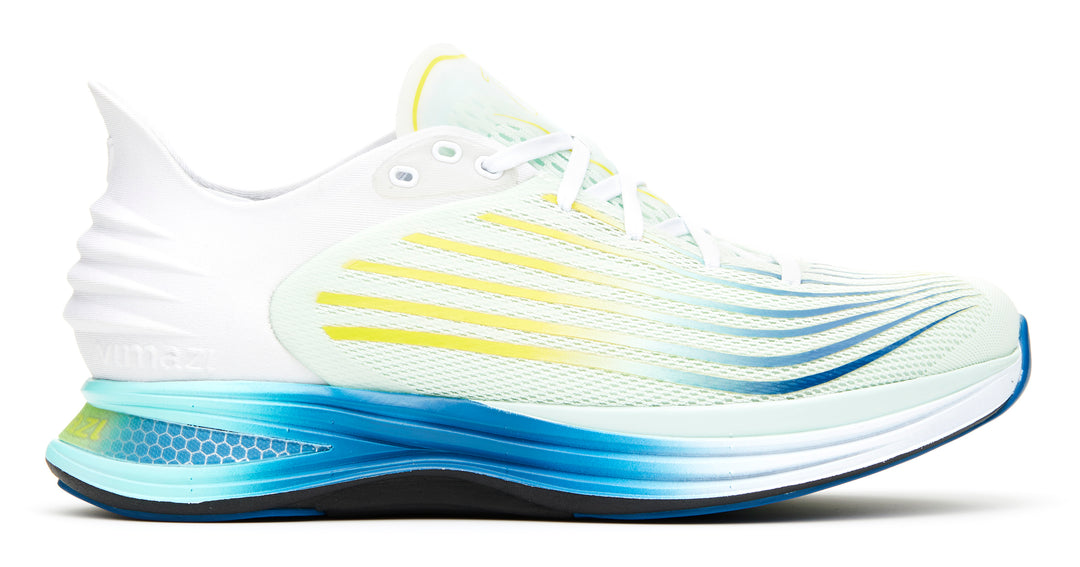
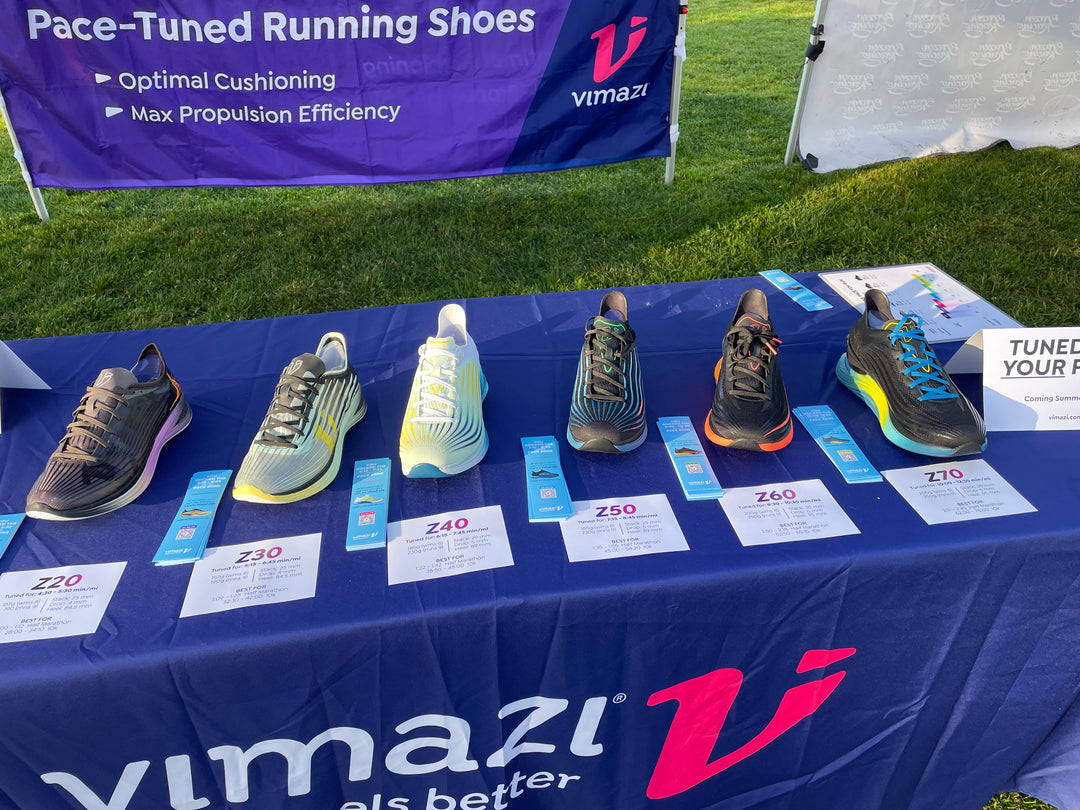
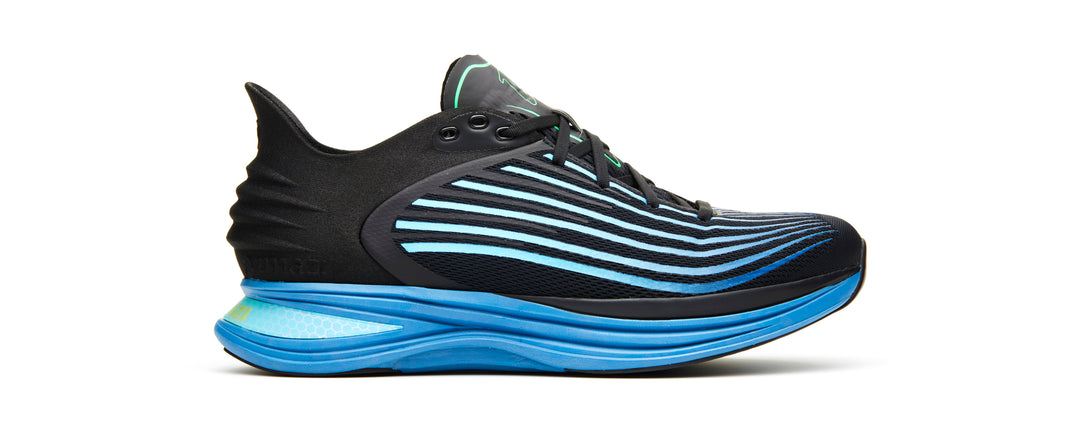
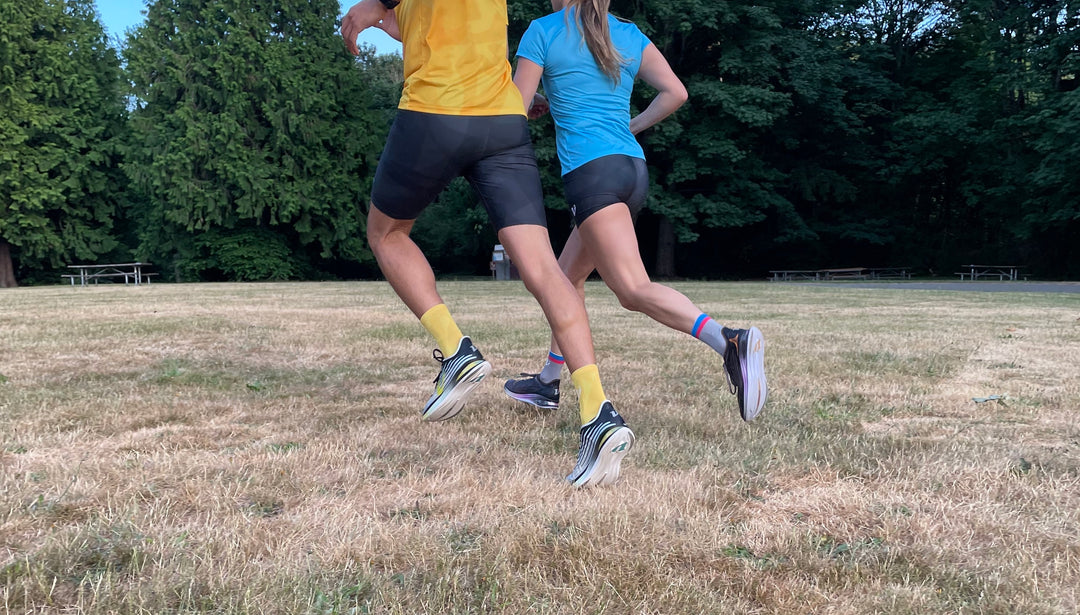
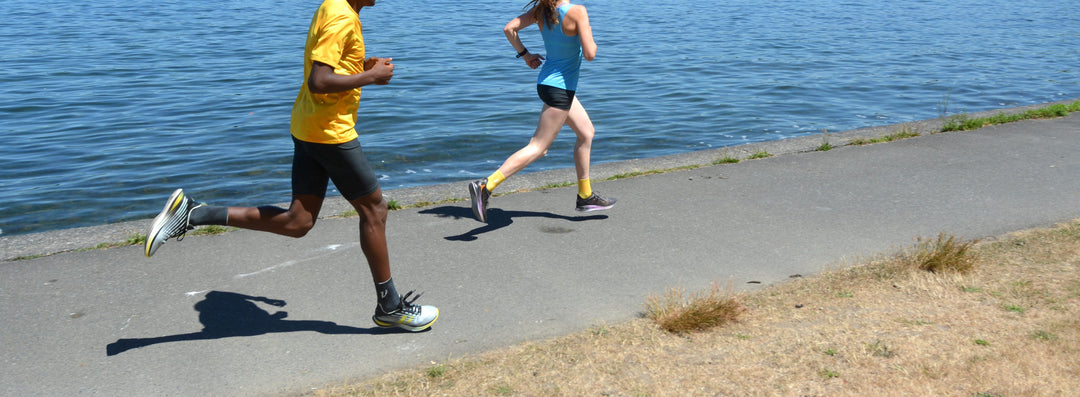

Leave a comment